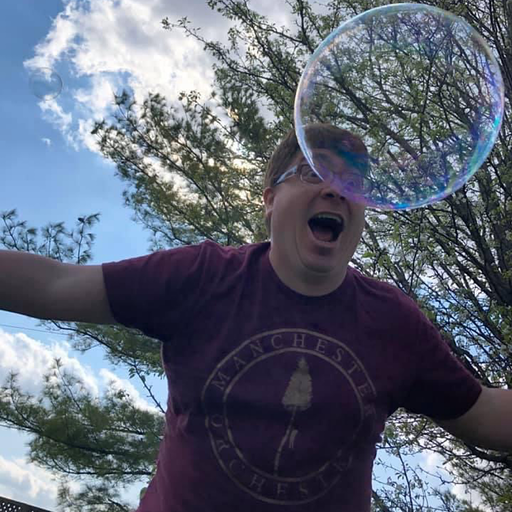I Spoke With Star Trek Lower Decks’ Animator, And He Explained Why The Series Is So Different From Other Animated Shows
The show puts in a lot of work that some viewers might not notice.
Star Trek: Lower Decks walks a tightrope that many other past entries in the sci-fi franchise haven't had to worry about. While it is an animated comedy, it's also part of an interconnected franchise and must follow rules and guidelines to fit into the canon. For crossovers like the recent one with Strange New Worlds to work, there must be a level of believability built in so that audiences buy that the characters on the Cerritos can rub shoulders with the crew of the Enterprise. Animator Barry Kelly explained how he and the LD creative team accomplished that feat when he spoke with CinemaBlend. And in the process, he opened up about what makes this show so unique compared to many other animated series.
I had a chance to speak to Barry Kelly before the premiere of Star Trek: Lower Decks Season 4. During the chat, I was able to ask him about the difficulties that come with making an animated comedy that utilizes the medium but isn't too cartoon-like. He then explained one of the methods they use to strike that balance, and it certainly sets the series apart from its peers From a visual standpoint, the team still tries to produce the series in a manner that's similar to current (and likely upcoming) live-action Trek shows:
I always tell our board artists and animators that it’s an animated sitcom, but it’s shot like a Star Trek show. Let’s say, like in Family Guy or Simpsons or something like that, there’s a sense of the camera, but it doesn’t have blurs or rack focuses, lenses, and stuff like that. ... Everything is kind of like on a grid, and that’s where the characters are in space. I think when trying to make Lower Decks, we want it to feel like it could translate to a live-action world as easily as translating a live0-action show to a cartoon. We’re very camera conscious, we’re moving the camera, we’re doing lens shifts. ... It is trying to add a sense of realism to it. It’s not realistic, but we want it to feel like the characters are in a real space. It’s not a drawing, it’s a shot.
If you fire up an episode of Star Trek: Lower Decks with a Paramount+ subscription, it won't take long for you to see just how much the animated series appears to be presented like a live-action one. These sensibilities may be partially why Tawny Newsome and Jack Quaid's Mariner and Boimler almost seamlessly translated to live-action. (Believe it or not, even some actors involved in the crossover were wondering if it could be pulled off.) Ultimately, Barry Kelly told CinemaBlend that LD and Strange New Worlds influenced each other via the collaboration, so here's hoping more of that synergy can happen in the future.
As far as the characters are concerned, the animation veteran revealed that much of the show's unique nature is due to the performances of the voice actors. That means making sure the fictional crew members feel like living, breathing people in the world of Star Trek and that the more over-the-top or mystical characters are that way due to a reason related to the lore:
It’s all inspired by them, and their voices are so strong. They say things way faster than I think an actor could. They completely inspire the performance. The only thing we’re trying to do is we just don’t want characters’ eyeballs shooting out of their head unless there’s an alien that can do that! As far as our characters, we subdue them in the sense that they are in their own physical space and they can’t just turn into Mister Mxyzptlk. Badgey can do that stuff. I think we limit it in the confines of Star Trek technology in that, being a hologram, Badgey can do that kind of stuff. ... But that’s definitely the kind of thing a live-action show can’t do that we can. We push the medium towards our strengths.
Between holograms, the Q Continuum, and other WTF moments across shows like The Next Generation, there are plenty of ways for Star Trek: Lower Decks to get more cartoony while justifying it within the confines of the franchise. The key, of course, is to set it up in a way that it makes sense and as Barry Kelly said, ensure that the core characters aren't doing anything without there being proper justification for it.
Lower Decks does a great job at avoiding a cartoonish vibe and staying fresh, but that's not to say the series doesn't have any of the tropes that come with that. The producer further mentioned during our interview that there is one element of the show that's only possible in animation and not live-action. However, fans don't seem to point out the ridiculousness of it all that much:
Probably the most cartoon thing we do is they whip our tricorders and phasers when they need them. And they just pull them out of their back pocket. They have pockets, they’re just not always visible to the camera, that’s all.
In Star Trek: Lower Decks Season 4, the members of the crew are adjusting to promotions and the responsibilities that come with them. All the while, something dangerous from the far reaches of space is headed their way. So far, what that is exactly remains a mystery, though I bet by the end of the season it'll be less elusive than an uncensored f-bomb in this animated series. All in all, let's hope Barry Kelly and his team continue to steer away from anything that seems familiar to the genre from a productions standpoint and maintain the aesthetic they've established.
Your Daily Blend of Entertainment News
You can currently stream episodes of Lower Decks, along with many of the other Star Trek shows and movies, on Paramount+. Snag a subscription today so you can catch up on content. as the SAG-AFTRA and WGA writers strikes may delay future productions.

Mick Joest is a Content Producer for CinemaBlend with his hand in an eclectic mix of television goodness. Star Trek is his main jam, but he also regularly reports on happenings in the world of Star Trek, WWE, Doctor Who, 90 Day Fiancé, Quantum Leap, and Big Brother. He graduated from the University of Southern Indiana with a degree in Journalism and a minor in Radio and Television. He's great at hosting panels and appearing on podcasts if given the chance as well.
